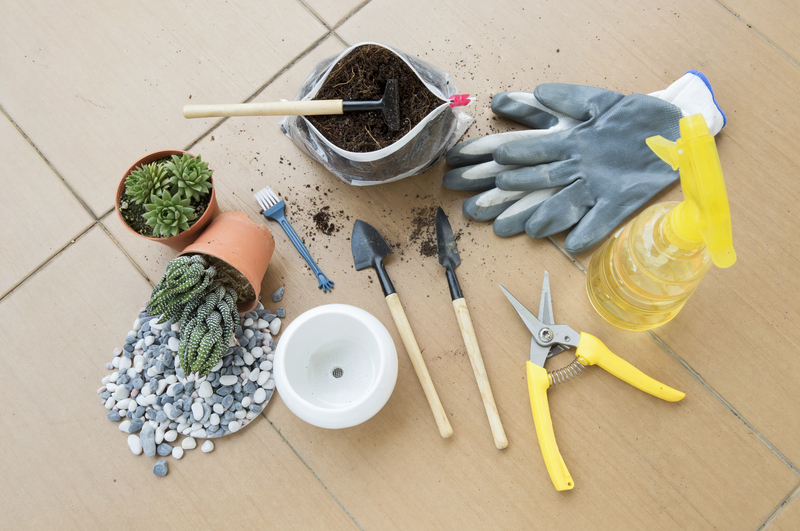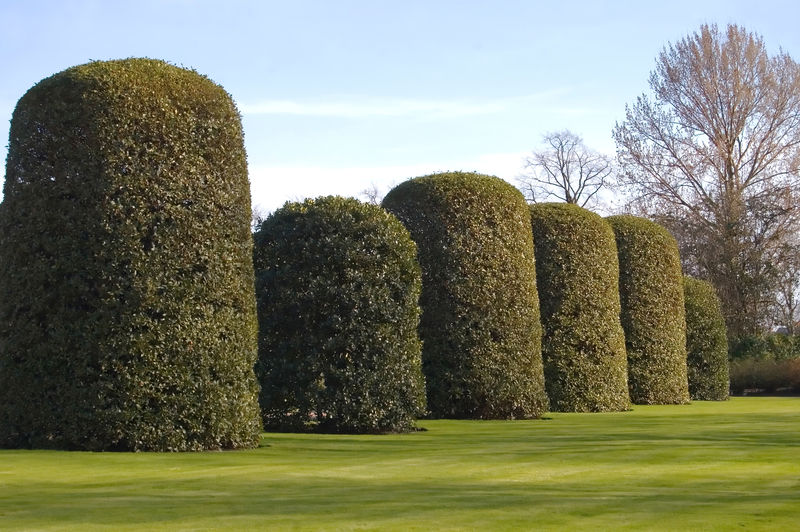How to Create a Flexible Garden in Three Simple Steps
Are you eager to foster an outdoor space that evolves with your needs, style, and the ever-changing seasons? Flexible gardens are the perfect solution for anyone who wants a dynamic, low-maintenance, and enjoyable space. In this guide, you'll discover how to create a flexible garden in three simple steps--an approach that will empower you to adapt and make the most of your green area for years to come.

Introduction: What is a Flexible Garden?
A flexible garden isn't just a trend--it's a versatile, functional outdoor environment designed to shift according to your lifestyle and the needs of your household. Unlike traditional landscaping, which may lock you into a rigid layout, a flexible gardening strategy makes use of movable features, multi-purpose spaces, modular planters, and adaptable plant selections. The result? A garden that remains resilient, enjoyable, and practical whether you're entertaining friends, growing vegetables, or seeking a tranquil retreat.
Ready to get started? Here's your detailed plan for making a flexible and adaptable garden a reality.
Step 1: Plan Your Flexible Outdoor Space
Set Your Priorities and Assess the Area
Start your journey towards a flexible garden design by determining how you'd like to use your garden space. Do you envision a kids' play zone during the day and a cozy dining area by evening? Are you looking to grow seasonal veggies alongside ornamental blooms?
- Evaluate your current space: Take note of sun and shade patterns, drainage, privacy levels, and any pre-existing structures.
- List your goals: Think through your short- and long-term wishes. Flexibility is about anticipating change, so consider what may evolve over time.
- Pencil sketch or use garden planning software: Drawing your ideas can help visualize what features and movable elements you may need.
Design for Multi-Functionality
With an adaptable garden layout, every element should serve more than one purpose whenever possible. For example:
- Movable planters allow you to change your plant arrangements as seasons--and tastes--shift.
- Outdoor furniture on wheels or lightweight materials makes it easy to reconfigure your seating area for parties, yoga, or quiet reflection.
- Pop-up shade solutions like retractable sails or umbrellas let you create sunny or shaded spaces on demand.
- Stackable or foldable tables and chairs save space and adapt to different group sizes.
Tip: Don't forget wide pathways or open lawn areas that can accommodate everything from kids' games to container garden arrangements. This flexibility will pay off as your needs change.
Step 2: Choose Flexible Features and Plants
Pick Modular and Movable Elements
The key to a versatile garden is adaptability. Select features that are easily rearranged or repurposed.
- Modular raised beds: These can be reconfigured, expanded, or reduced as your vegetable or flower selection changes with the seasons.
- Containers and pots: Use a mix of lightweight materials like resin, plastic, or fabric to facilitate easy movement. Group them or spread them out as desired.
- Removable trellises and screens: These can create instant privacy, shade, or even act as vertical gardens. Move or store them when you want open views or more sunlight.
- Portable water features: A small fountain or birdbath on wheels can serve as a focal point one season and move aside when needed.
Invest in storage solutions such as benches with space beneath for garden tools, cushions, or children's toys. Storage sheds with adjustable shelving will help keep the garden uncluttered, enabling you to rearrange the area as needed.
Select Adaptable Plants
A core principle in flexible garden planting is to embrace a mix of perennials, annuals, and self-seeding varieties. This mix ensures color, interest, and changing displays throughout the year.
- Perennials: These come back every year, providing consistent structure.
- Annuals and biennials: Easily swapped in and out, allowing you to change your color palette or planting scheme yearly.
- Herbs and salad greens: Perfect for containers and raised beds, they can be relocated to suit changing sunlight requirements across the seasons.
- Climbers and vines: Fast-growing climbers can be trained up removable supports, creating movable living walls for privacy or shade.
Tip: Consider native species for lower maintenance and greater resilience to fluctuating local climates.
Plan for Changing Conditions
Flexible gardens work best when you're prepared for change--seasonal weather, plant lifecycles, and shifting lifestyles. Choose drought-tolerant species for sunny borders and moisture-loving plants for shadier spots. Use mulch and groundcovers to keep maintenance low and soil healthy as you experiment with plant placements.
Step 3: Maintain and Evolve Your Flexible Garden
Schedule Regular Reassessments
The beauty of a flexible garden design lies in its natural adaptability. To keep your outdoor oasis fresh and functional:
- Set aside time at the start of each season to reevaluate usage and consider new arrangements.
- Update your planters with seasonal plants or edible crops for year-round visual interest and utility.
- Liberate underused spaces: If a corner feels crowded or unloved, repurpose it with new container groupings, a pop-up tent for summer shade, or even a compact composting station.
Balance Flexibility and Cohesion
Too much change can sometimes feel chaotic. Aim for a balance between adaptability and unity by choosing a welcoming, harmonious color scheme for plant containers or outdoor cushions, repeating certain plant varieties, and using cohesive paving or edging materials throughout the garden.
Embrace Creative Solutions
Your adaptable garden should empower you to experiment with new ideas. Don't be afraid to try something bold:
- Introduce movable screens or lightweight arches for instant "garden rooms."
- Rotate pots and troughs to experiment with sunlight and shade requirements.
- Host pop-up events using collapsible furniture or install temporary features for special occasions.
- Add seasonal lighting, rugs, or outdoor art to shift the mood and use of the garden for different gatherings or quiet evenings.
Extra Tips for a Truly Adaptable Garden
- Use Smart Irrigation: Set up drip lines or moveable hoses that can be redirected as plantings shift to new spots.
- Invest in Quality Tools: Collapsible wheelbarrows, fold-up hoes, and multi-head pruners save space and make all types of tasks easier.
- Keep It Accessible: Adapt pathways and raised beds to ensure everyone--including children or those with mobility challenges--can enjoy the space.
- Think About Microclimates: Use large pots or vertical screens to modify sun and wind exposure, creating microhabitats for different plants as needed.

Why Choose a Flexible Garden?
Still not convinced? Here's why flexible gardening is the modern gardener's best choice:
- Accommodate Change: Whether life brings new family members, pets, hobbies, or accessibility needs, your garden will grow with you.
- Maximize Enjoyment: Reconfigure your outdoor area for dining, reading, play, or gardening any time you wish.
- Reduce Maintenance: An adaptable space with movable features helps you tackle chores efficiently and prevent overgrowth.
- Support Creativity: Your garden becomes a living canvas, always ready for new plants, layouts, and outdoor experiences.
- Boost Property Value: Versatile gardens are a plus for homebuyers, adding curb appeal and long-term usability.
Ultimately, the best flexible garden is the one that reflects your personality and lifestyle--ready to transform for whatever tomorrow brings.
Conclusion: Design a Flexible Garden for Every Season
With these three simple steps to create a flexible garden, anyone can enjoy an outdoor sanctuary that's beautiful, practical, and endlessly adaptable. Plan carefully, invest in versatile features and plantings, and regularly refresh your layout to make the most of every inch of your garden. Whether you're a seasoned horticulturalist or a new homeowner, a flexible outdoor space will help you celebrate the joys of gardening without locking you into one static vision.
Ready to start your journey? Pick a step and watch your outdoor dreams grow!
Frequently Asked Questions about Flexible Gardens
- Can I create a flexible garden in a small yard or balcony?
Absolutely! Flexible garden principles work for any size space, especially with modular planters, compact furniture, and vertical gardening solutions. - How often should I update my garden layout?
Many gardeners reassess their layout with each new season or after major life changes. Seasonal refreshes keep your garden interesting all year. - Is a flexible garden expensive?
It doesn't have to be. You can start with a few movable planters and repurpose existing items. Over time, invest in modular or portable pieces as your budget allows. - Are flexible gardens suitable for growing food?
Yes! Raised beds and containers make it easy to rotate crops, try new vegetables, and keep edible plants healthy throughout changing seasons.
Now you know how to create a flexible garden--you're only three steps away from an outdoor retreat that never stops inspiring.

